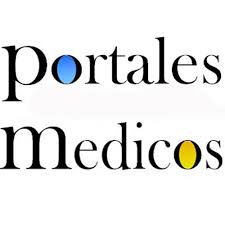Predicción de la Asociación Causal Micro ARN-Enfermedad de Alzheimer Utilizando Redes Neuronales de Grafos
Resumen
Introducción: La enfermedad de Alzheimer (EA) es un trastorno neurodegenerativo caracterizado por la presencia de ovillos de proteína tau y placas beta-amiloideas, que interrumpen la función cerebral y conducen a la pérdida neuronal. Objetivo: Dilucidar los mecanismos moleculares subyacentes a la EA e identificar nuevas dianas terapéuticas, con un enfoque en el establecimiento de vínculos causales entre los microARNs y la EA, críticos para la detección temprana y el monitoreo de la enfermedad. Métodos: El estudio utilizó la base de datos HMDD V4.0 para examinar un conjunto de datos sobre la causalidad en las asociaciones microARN-enfermedad, que comprende perfiles de expresión de microARN e información clínica de pacientes con EA e individuos sanos. El conjunto de datos se sometió a redes neuronales de grafos para predecir las interacciones causales entre los microARNs y la EA. Resultados: El modelo de red neuronal de grafos demostró un rendimiento robusto en la predicción de la enfermedad de Alzheimer, alcanzando una precisión del 69.44%, una recuperación del 83.33% y una puntuación F1 del 75.75%, lo que indica su potencial en la identificación de biomarcadores o dianas terapéuticas utilizando datos de microARN. Conclusión: El modelo de red neuronal de grafos para la predicción de asociaciones causales entre la enfermedad de Alzheimer y los microARNs muestra ser prometedor. Sin embargo, se justifica una mayor investigación sobre el equilibrio del conjunto de datos, los ajustes a los umbrales de clasificación, la incorporación de características adicionales y la exploración de arquitecturas de modelos avanzados.
Recibido: 28/02/2025
Aceptado: 06/03/2025
Palabras clave
Texto completo:
PDF (English)Referencias
Wei H, Zhu Z, Xu Y, Lin L, Chen Q, Liu Y, et al. Microglia-derived exosomes selective sorted by YB-1 alleviate nerve damage and cognitive outcome in Alzheimer’s disease. J Transl Med. 2024;22(1):466.
Li JZ, Ramalingam N, Li S. Targeting epigenetic mechanisms in amyloid-ß-mediated Alzheimer’s pathophysiology: unveiling therapeutic potential. Neural Regen Res. 2025;20(1):54–66.
Jadhav SP. MicroRNAs in microglia: deciphering their role in neurodegenerative diseases. Front Cell Neurosci. 2024;18:1391537.
Singh M, Agarwal V, Pancham P, Jindal D, Agarwal S, Rai SN, et al. A Comprehensive Review and Androgen Deprivation Therapy and Its Impact on Alzheimer’s Disease Risk in Older Men with Prostate Cancer. Degener Neurol Neuromuscul Dis. 2024;14:33–46.
Piergiorge RM, Vasconcelos ATR de, Santos-Rebouças CB. Understanding the (epi)genetic dysregulation in Parkinson’s disease through an integrative brain competitive endogenous RNA network. Mech Ageing Dev. 2024;219:111942.
Turk A, Kunej T, Peterlin B. MicroRNA-Target Interaction Regulatory Network in Alzheimer’s Disease. J Pers Med. 2021 Dec;11(12): 1275
Haga CL, Yang XD, Gheit IS, Phinney DG. Graph neural networks for the identification of novel inhibitors of a small RNA. SLAS Discov. 2023;28(8):402–9.
Dong B, Sun W, Xu D, Wang G, Zhang T. DAEMDA: A Method with Dual-Channel Attention Encoding for miRNA-Disease Association Prediction. Biomolecules. 2023;13(10):1514
Yang Y, Sun Y, Li F, Guan B, Liu JX, Shang J. MGCNRF: Prediction of Disease-Related miRNAs Based on Multiple Graph Convolutional Networks and Random Forest. IEEE Trans Neural Netw Learn Syst. 2024;35(11):15701-15709.
Jia C, Wang F, Xing B, Li S, Zhao Y, Li Y, et al. DGAMDA: Predicting miRNA-disease association based on dynamic graph attention network. Int J Numer Method Biomed Eng. 2024;40(5):e3809.
Yan C, Duan G, Li N, Zhang L, Wu FX, Wang J. PDMDA: predicting deep-level miRNA-disease associations with graph neural networks and sequence features. Bioinformatics. 2022;38(8):2226–34.
Ning Q, Zhao Y, Gao J, Chen C, Li X, Li T, et al. AMHMDA: attention aware multi-view similarity networks and hypergraph learning for miRNA-disease associations identification. Brief Bioinform. 2023;24(2):bbad094
Przybyszewski J, Malawski M, Licholai S. GraphTar: applying word2vec and graph neural networks to miRNA target prediction. BMC Bioinformatics. 2023;24(1):436.
Cui C, Zhong B, Fan R, Cui Q. HMDD v4.0: a database for experimentally supported human microRNA-disease associations. Nucleic Acids Res. 2024;52(D1):D1327–32.
Zhang L, Lu Q, Chang C. Epigenetics in Health and Disease. Adv Exp Med Biol. 2020;1253:3–55.
Le TD, Liu L, Tsykin A, Goodall GJ, Liu B, Sun BY, et al. Inferring microRNA–mRNA causal regulatory relationships from expression data. Bioinformatics. 2013;29(6):765–71.
Li G, Fang T, Zhang Y, Liang C, Xiao Q, Luo J. Predicting miRNA-disease associations based on graph attention network with multi-source information. BMC Bioinformatics. 2022;23(1):244.
Budakoti M, Panwar AS, Molpa D, Singh RK, Büsselberg D, Mishra AP, et al. Micro-RNA: The darkhorse of cancer. Cell Signal. 2021;83:109995.
Yao D, Li B, Zhan X, Zhan X, Yu L. GCNFORMER: graph convolutional network and transformer for predicting lncRNA-disease associations. BMC Bioinformatics. 2024;25(1):5
Li R, Yao S, Wei F, Chen M, Zhong Y, Zou C, et al. Downregulation of miR-181c-5p in Alzheimer’s disease weakens the response of microglia to Aß phagocytosis. Sci Rep. 2024 ;14(1):11487.
Lahiri DK, Maloney B, Wang R, White FA, Sambamurti K, Greig NH, et al. The seeds of its regulation: natural antisense transcripts as single-gene control switches in neurodegenerative disorders. Ageing Res Rev. 2024; 99:102336
Fu Y, Yang R, Zhang L, Fu X. HGECDA: A Heterogeneous Graph Embedding Model for CircRNA-Disease Association Prediction. IEEE J Biomed Health Inform. 2023;27(10):5177–86.
Xie GB, Yu JR, Lin ZY, Gu GS, Chen RB, Xu HJ, et al. Prediction of miRNA-disease associations based on strengthened hypergraph convolutional autoencoder. Comput Biol Chem. 2024;108:107992.
Ai N, Liang Y, Yuan H, Ouyang D, Xie S, Liu X. GDCL-NcDA: identifying non-coding RNA-disease associations via contrastive learning between deep graph learning and deep matrix factorization. BMC Genomics. 2023;24(1):424.
Hu H, Zhao H, Zhong T, Dong X, Wang L, Han P, et al. Adaptive deep propagation graph neural network for predicting miRNA-disease associations. Brief Funct Genomics. 2023;22(5):453–62.
Ma Z, Kuang Z, Deng L. NGCICM: A Novel Deep Learning-Based Method for Predicting circRNA-miRNA Interactions. IEEE/ACM Trans Comput Biol Bioinform. 2023;20(5):3080–92.
Niu Z, Gao X, Xia Z, Zhao S, Sun H, Wang H, et al. Prediction of small molecule drug-miRNA associations based on GNNs and CNNs. Front Genet. 2023;14:1201934
Luo H, Liang H, Liu H, Fan Z, Wei Y, Yao X, et al. TEMINET: A Co-Informative and Trustworthy Multi-Omics Integration Network for Diagnostic Prediction. Int J Mol Sci. 2024; 25(3):1655
Zhong Y, Peng Y, Lin Y, Chen D, Zhang H, Zheng W, et al. MODILM: towards better complex diseases classification using a novel multi-omics data integration learning model. BMC Med Inform Decis Mak. 2023;23(1):82.
Tian Z, Han C, Xu L, Teng Z, Song W. MGCNSS: miRNA-disease association prediction with multi-layer graph convolution and distance-based negative sample selection strategy. Brief Bioinform. 2024;25(3):bbae168
Ji C, Wang Y, Ni J, Zheng C, Su Y. Predicting miRNA-Disease Associations Based on Heterogeneous Graph Attention Networks. Front Genet. 2021;12:727744.
DOI: https://www.doi.org/10.53766/AcBio/Se encuentra actualmente indizada en: | |||
 |  |  | |
  |  |  |  |
 |  |  |  |
 |  |  | |
![]()
Todos los documentos publicados en esta revista se distribuyen bajo una
Licencia Creative Commons Atribución -No Comercial- Compartir Igual 4.0 Internacional.
Por lo que el envío, procesamiento y publicación de artículos en la revista es totalmente gratuito.



